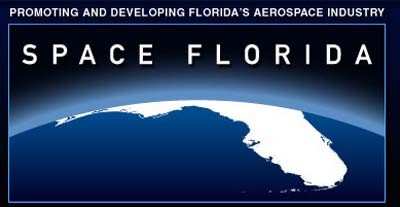Wed, May 16, 2012
Environmental Assessment Supports Expansion At Launch Complex 36B, Enables Joint FAA Launch Site Operators License For LC-36, LC-46
Space Florida will finalize an Environmental Assessment (EA) this summer that will enable the expansion of its two launch sites at Cape Canaveral Spaceport, Launch Complexes 36 and 46. The EA supports the expansion of LC-36 – specifically Pad B – to enable static test firing of all varieties and sizes of rocket motors and launch of university-developed or other small sounding rockets. It will also assist the Federal Aviation Administration (FAA) in approving both LC-36 and LC-46 for a joint Launch Site Operators License. The EA is being conducted by Florida-based RS&H, and was made possible by a Defense Infrastructure Grant allotted to Space Florida for this fiscal year.

“Adding launch and test stand capacities will provide an additional draw for companies looking at expanding their launch programs into Florida, or for Florida universities seeking a Cape launch capability,” said Space Florida Vice President of Spaceport Operations Mark Bontrager. “We have a number of launch providers that have shown a strong interest in having their own test stands and expanded facilities at our sites. Following this assessment, we can see those projects to fruition.”
Currently, Masten Space Systems is slated to utilize LC-36A in June for test launches of their liquid-fueled, small-lift reusable vehicles. The NASA Orion abort test booster and Lockheed Martin have both also publicly stated interest in utilizing LC-46 as a launch location. Additionally, the U.S. Air Force recently awarded Space Florida an IDIQ contract for LC-46.
Launch providers interested in utilizing pads on LC-36 or LC-46 could test or fly as soon as a year after requesting permission to employ these Space Florida facilities.
The EA being conducted will analyze environmental impacts associated with launch vehicles at LC-36 and LC-46 including:
- Athena-1 and Athena-2, Minotaur, Taurus, and other Castor® 120-based or Minuteman-derived booster vehicles; Peacekeeper-derived booster vehicles; and small sounding rocket launch vehicles;
- Liquid propellant medium class launch vehicles with a solid propellant second stage, and a bipropellant third stage;
- Vertical Take-off and Vertical Landing (VTVL) vehicles similar to Masten Space Systems’ G Class Launch Vehicle; and
- Orion Multi Purpose Crew Vehicle Ascent Abort test flights.
The EA will also include static testing of liquid, hybrid, and solid propellant motors of various sizes. It will analyze all propellant types including: RP-1, liquid oxygen (LOX), Isopropyl Alcohol (IPA), Ethanol, Nitrous Oxide, Hydroxyl-Terminated Polybutadiene (HTPB), hydrazine (N2H2) and nitrogen tetroxide (N2O4), Polybutadien Acrylonitrile (PBAN), Ammonium Perchlorate, and Aluminum.
More News
Also: New Lakeland Fly-in!, Gleim's DPE, MOSAIC! Nearly three-quarters of a century in the making, EAA is excited about the future… especially with the potential of a MOSAIC>[...]
Estimated (EST) -When used in NOTAMs “EST” is a contraction that is used by the issuing authority only when the condition is expected to return to service prior to the >[...]
Aero Linx: Regional Airline Association (RAA) Regional airlines provide critical links connecting communities throughout North America to the national and international air transpo>[...]
The Airplane Broke Up In Flight And Descended To The Ground. The Debris Path Extended For About 1,435 Ft. Analysis: The pilot, who was the owner and builder of the experimental, am>[...]
From 2015 (YouTube version): History Comes Alive Thanks to A Magnificent CAF Effort The story of the Douglas C-47 named, “That’s all Brother,” is fascinating from>[...]
 Airborne 07.21.25: Nighthawk!, Hartzell Expands, Deltahawk 350HP!
Airborne 07.21.25: Nighthawk!, Hartzell Expands, Deltahawk 350HP! ANN's Daily Aero-Term (07.27.25): Estimated (EST)
ANN's Daily Aero-Term (07.27.25): Estimated (EST) ANN's Daily Aero-Linx (07.27.25)
ANN's Daily Aero-Linx (07.27.25) NTSB Final Report: Luce Buttercup
NTSB Final Report: Luce Buttercup Classic Aero-TV: 'That's All Brother'-Restoring a True Piece of Military History
Classic Aero-TV: 'That's All Brother'-Restoring a True Piece of Military History



